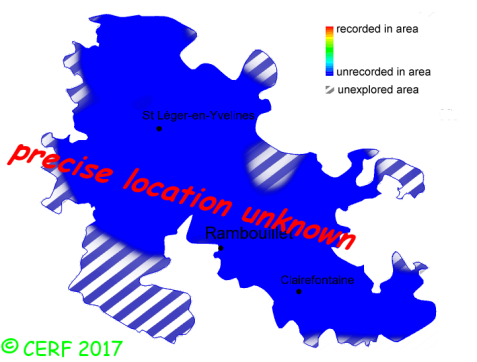|
Cystodermella cinnabarina (Alb. & Schwein.:Fr.) Harmaja
|
common name(s) : Cinnabar Powdercap
New classification: Basidiomycota/Agaricomycotina/Agaricomycetes/Agaricomycetidae/Agaricales/Agaricaceae
Former classification: Basidiomycota/Homobasidiomycetes/Agaricomycetideae
synonyms: Cystoderma terrei, Cystoderma cinnabarinum, Lepiota cinnabarina
(unconfirmed synonyms: Cystoderma terreii, Cystoderma terreyi)
edibility : discard
|
|
|
The cap is bright brick red.
The cap surface is smooth, not viscid nor sticky.
The flesh is white, unchanging; its taste is mild; the odour is pleasant, non earthy;
its texture is fibrous.
The gills are adnate, crowded .
The spore print is white. This species is saprophytic.
It grows on the ground.
The fruiting period takes place from July to November.
| Dimensions: | width of cap approximately 6 cm (between 2 and 10 cm) |
| | height of stem approximately 6 cm (between 2 and 8 cm) |
| | thickness of stem (at largest section) approximately 10 mm (between 5 and 15 mm) |
Distinctive features : bright brick-red cap; stem with veil
Cystodermella cinnabarina is rare and confined in the forest of Rambouillet, and is quite rare, more generally speaking
.
|  | | Above : distribution map of Cystodermella cinnabarina in the forest of Rambouillet |
|
page updated on 14/01/18